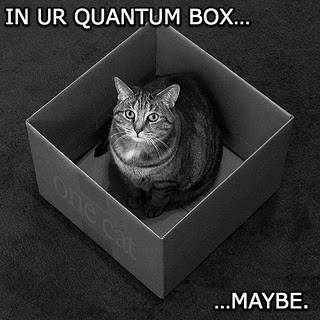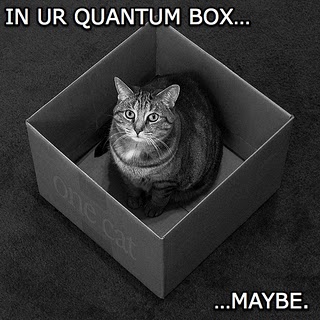 Some day solar cells will be as cheap as house paint, and the renewables vs. fossil fuel debate will seem as quaint as Whigs vs. Jacksonian Democrats. Getting there has inspired all kinds of crazy ideas, and the craziest, perhaps, is to do it exactly like plants do.
Some day solar cells will be as cheap as house paint, and the renewables vs. fossil fuel debate will seem as quaint as Whigs vs. Jacksonian Democrats. Getting there has inspired all kinds of crazy ideas, and the craziest, perhaps, is to do it exactly like plants do.
Thing is, your average plant turns out to be exploiting tricks of physics that most scientists used to think were only possible inside a lab, under high vacuum, at the intersection of a bunch of laser beams cooling a handful of atoms to near absolute zero.
A new discipline called "quantum biology" holds that plants are exploiting a trick of quantum mechanics to convert sunlight into plant niblets at unexpectedly high efficiencies. The details are complicated, but it appears that electrons produced by a plant cell's chloroplasts attain a state of quantum "coherence," where the electrons’ wave patterns are moving in lock-step. It’s sort of like a crew team pulling in unison — much more powerful than everyone just flailing their oars around chaotically.
Most of the time, particles at normal cellular temperatures are shaking so violently that anything about them that's the least bit quantumly coherent is instantly destroyed. But somehow plants, like the honey badger, just don't give a f*ck. They use the vibrations of their atoms at room temperature to actually encourage coherence, which means electrons move to their destination even faster than normal.
These effects, in turn, suggest practical uses. Perhaps most obviously, says Scholes, a better understanding of how biological systems achieve quantum coherence in ambient conditions will "change the way we think about design of light-harvesting structures". This could allow scientists to build technology such as solar cells with improved energy-conversion efficiencies. Seth Lloyd considers this "a reasonable expectation", and is particularly hopeful that his discovery of the positive role of environmental noise will be useful for engineering photonic systems using materials such as quantum dots (nanoscale crystals) or highly branched polymers studded with light-absorbing chemical groups, which can serve as artificial antenna arrays.
No one would have thought solar panels could become more efficient by exploiting quantum effects without being massively expensive. Until they investigated the properties of a humble blade of grass.

 Some day solar cells will be as cheap as house paint, and the renewables vs. fossil fuel debate will seem as quaint as Whigs vs. Jacksonian Democrats. Getting there has inspired all kinds of crazy ideas, and the craziest, perhaps, is to do it exactly like plants do.
Some day solar cells will be as cheap as house paint, and the renewables vs. fossil fuel debate will seem as quaint as Whigs vs. Jacksonian Democrats. Getting there has inspired all kinds of crazy ideas, and the craziest, perhaps, is to do it exactly like plants do.


